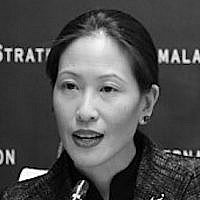Bunting’s map and Israel on China’s new silk road
Yossef Bodansky, an Israeli-American political scientist and senior editor of GIS/Defense & Foreign Affairs Daily, wrote an insightful article in their September issue regarding the convergence of China’s Afro-Eurasian integration project and Bunting’s map of the world as a clover leaf.

Heinrich Bunting was a German Protestant pastor, theologist and cartographer, and in his masterpiece Itinerarium Sacrae Scripturae (Travel Through Holy Scripture) in 1581, he portrayed the world that mattered was comprised of the three continents of Europe, Asia, and Africa, with each depicted as a cloverleaf. They converged in Jerusalem, and the rest of the world was irrelevant.
In his article entitled “The History of What’s Next”, Bodansky argued that the Bunting map is likely the best depiction of the unfolding global geopolitical architecture of the 21st century. With the demise of the Arab modern state and Sykes-Picot post-Arab Spring, “Libya, Iraq, Syria and Lebanon are no more, and Jordan and Yemen are not far behind.”
Instead, what is arising is the merging of the greater Middle East and the greater framework of the reawakened Mackinderian world order. And, the clover leaf world centred on Jerusalem is converging with China’s One Belt, One Road project.
Israel as key node on China’s New Silk Road
With the rise of Salafi-jihadism in the Middle East increasingly threatening China’s overseas citizens and assets, especially to their maritime trade via the Suez Canal, Israel is emerging as a strategic node on China’s southern corridor on the New Silk Road.
As the worlds’ largest trading nation and with over 95% of global trade still being seaborne, Beijing is heavily dependent on the Canal to reach its largest export market in Europe—with trade volume at €521 billion in 2015. Geography matters, and the Middle East is also where China imports more than half of its crude oil.
However, the presence of ISIS, Al Qaeda and other Islamic extremist groups in the Sinai are threatening China’s maritime trade. As such, China is building a “steel canal” of the Med-Red Railway through Israel to connect the Red Sea to the Mediterranean Sea that bypasses the Suez.
This was especially prompted by an incident in 2013 when Al Furqun Brigade, an Al Qaeda affiliate, attacked China’s COSCO container ship by firing Rocket Propelled Grenades (RPGs) while it was in the Suez Canal en route to northern Europe. With increased military activity and ship inspections in the Suez, maritime insurance company Lloyd’s List recommended that ships take the 6,000-mile (almost 9,700 kilometers) longer route around the Cape of Good Hope—essentially around the entire African continent.
These shipping delays and risk premiums are costly for China. Although Beijing is building overland networks of railroads and highways as part of the planned Silk Road economic belt across Eurasia, these routes are a diversification, not replacement, of important maritime transport corridors.
Israel as a regional power
Thus the rise of Israel as a key node in China’s Silk Road grand strategy not only elevates Jerusalem in China’s strategic calculus, but as Jean Michel Valantin of The Red Team Analysis Society argued, also presents a new status of Israel from a “protected power” of the US to an “integrated regional power” in its own right, transforming Israel’s traditional narrative of seeking “protectors” to one of seeking partners.
The emergence of Israel as a Mediterranean energy player, its continued stability and robust military power in a neighborhood of unstable and weakening Arab states, and outreach to the eastern hemisphere by joining Turkey and Egypt in their applications to the China-led Shanghai Cooperation Organization, is thus slowly creating a new regional and international systems of shared interest between Mideast countries and the Middle Kingdom.
Nonetheless, Syria remains a thorny issue between Israel and China as well as with Russia and India, due to Jerusalem’s support for the opposition that consists of jihadists from these countries.
The August 30 terrorist attack on China’s embassy in Kyrgyzstan by Turkistan Islamic Party (TIP/ETIM) in Idlib, Syria, financed by the re-branded al Nusra Jabhat Fatah al-Sham (JFS) and coordinated from Turkey, demonstrates how terrorist haven in Syria is increasingly threatening China’s energy, maritime, and human security.
With Russia, China and India now increasing support for the Syrian government that is helping them fight Eurasian militants in the Army of Conquest, while Israel understandably sides with Saudi Arabia, Turkey and Qatar to back them, this risks misunderstanding and miscalculation between Jerusalem and rising Eurasian powers.
As such it is important for Israel to establish a cooperative platform for deconfliction and crisis management with China regarding Syria, as it has done with Russia, especially now that Chinese military advisors are on the ground and will likely increase its footprint with the recent military agreement with Damascus.
If Israel could balance its status as a traditional “protectorate” of Uncle Sam and its emerging trajectory as a “regional power” with additional partners, and take stock not only of US interests but also legitimate interests of new Mideast actors such as China and Russia, it could help manage the transition and maintain relative stability as the greater middle east continues to converge with China’s Afro-Eurasian integration project. And along with this, perhaps a resurrection of Bunting’s Cloverleaf world and a return to history.





